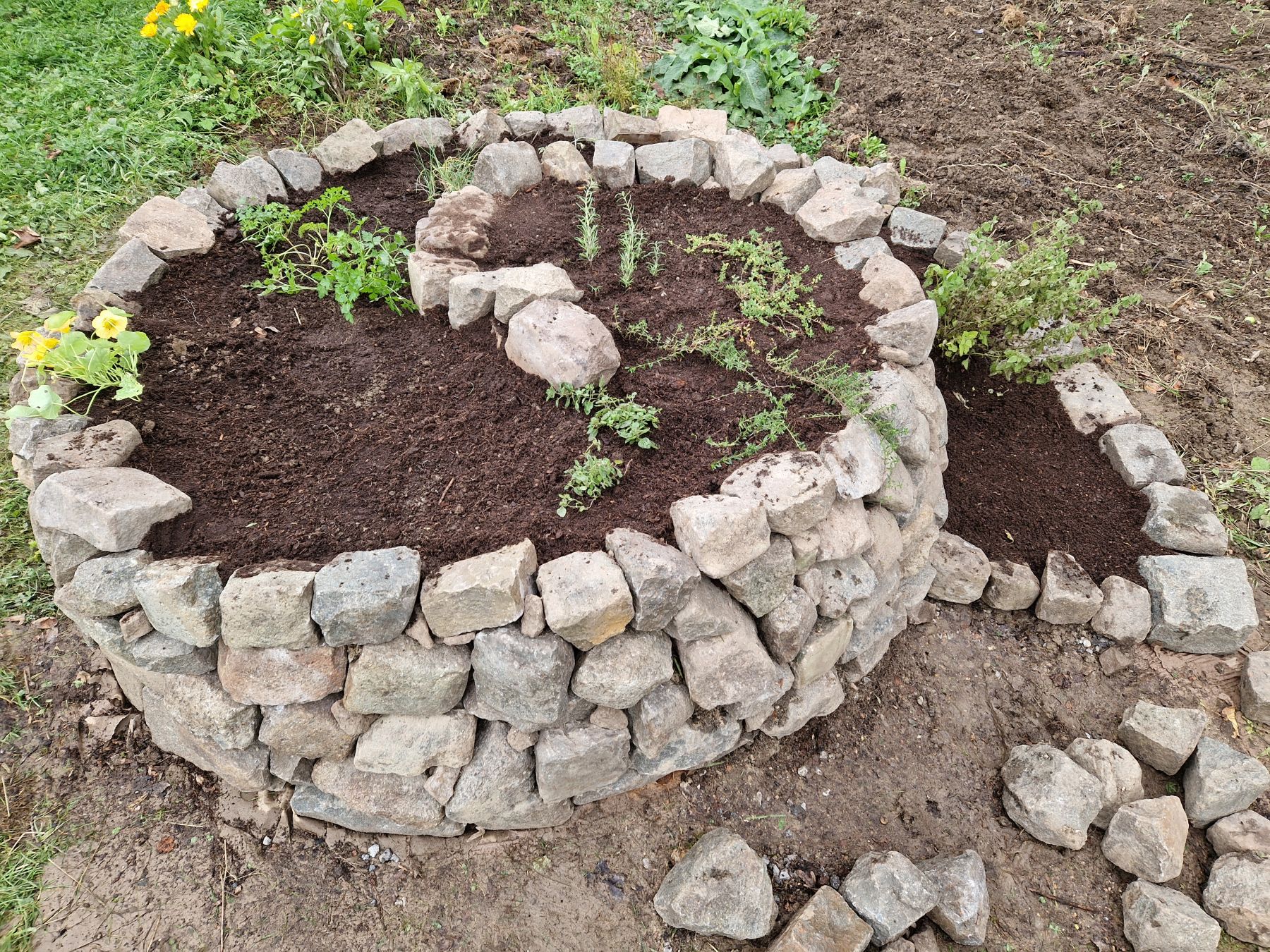
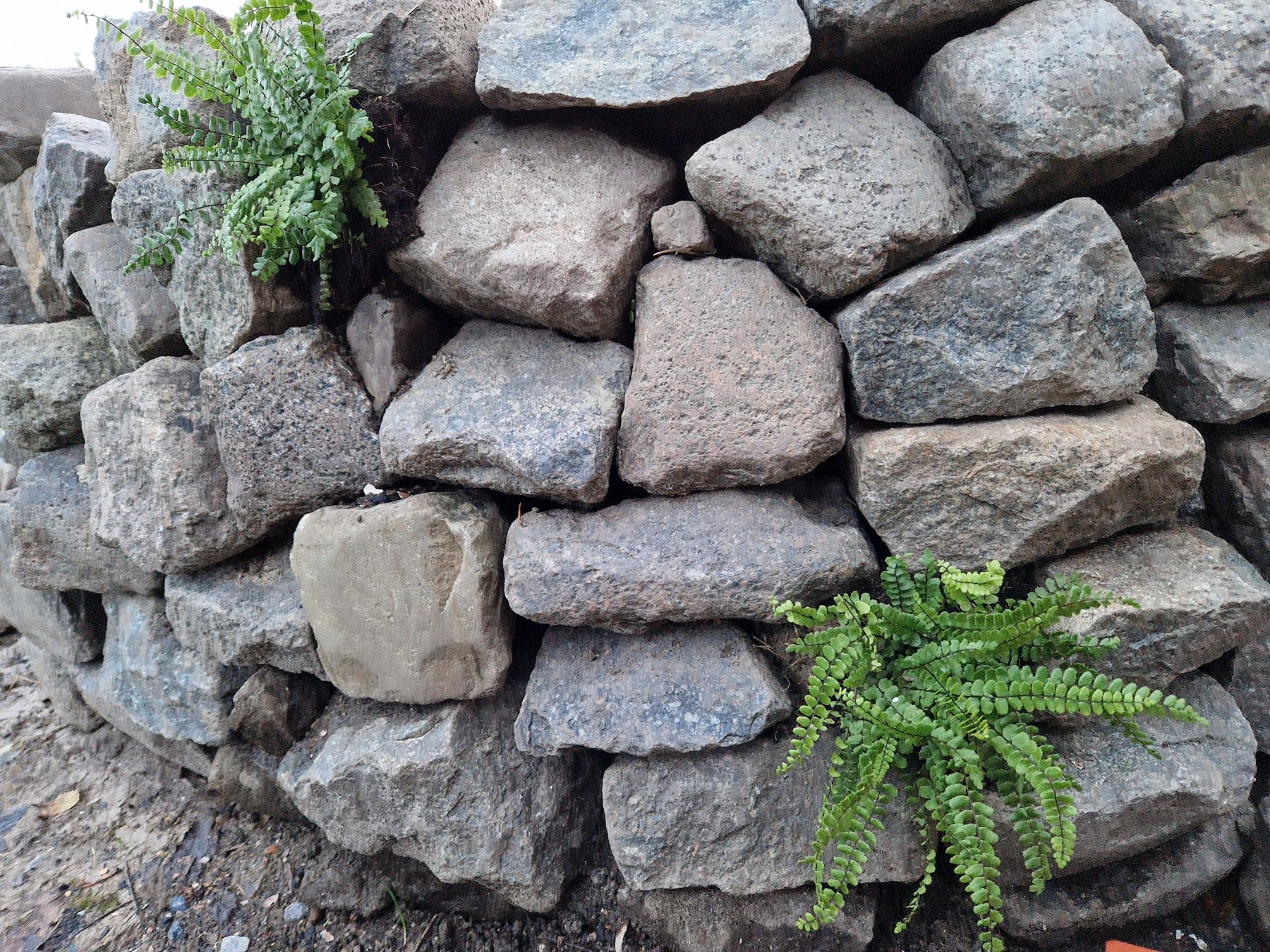
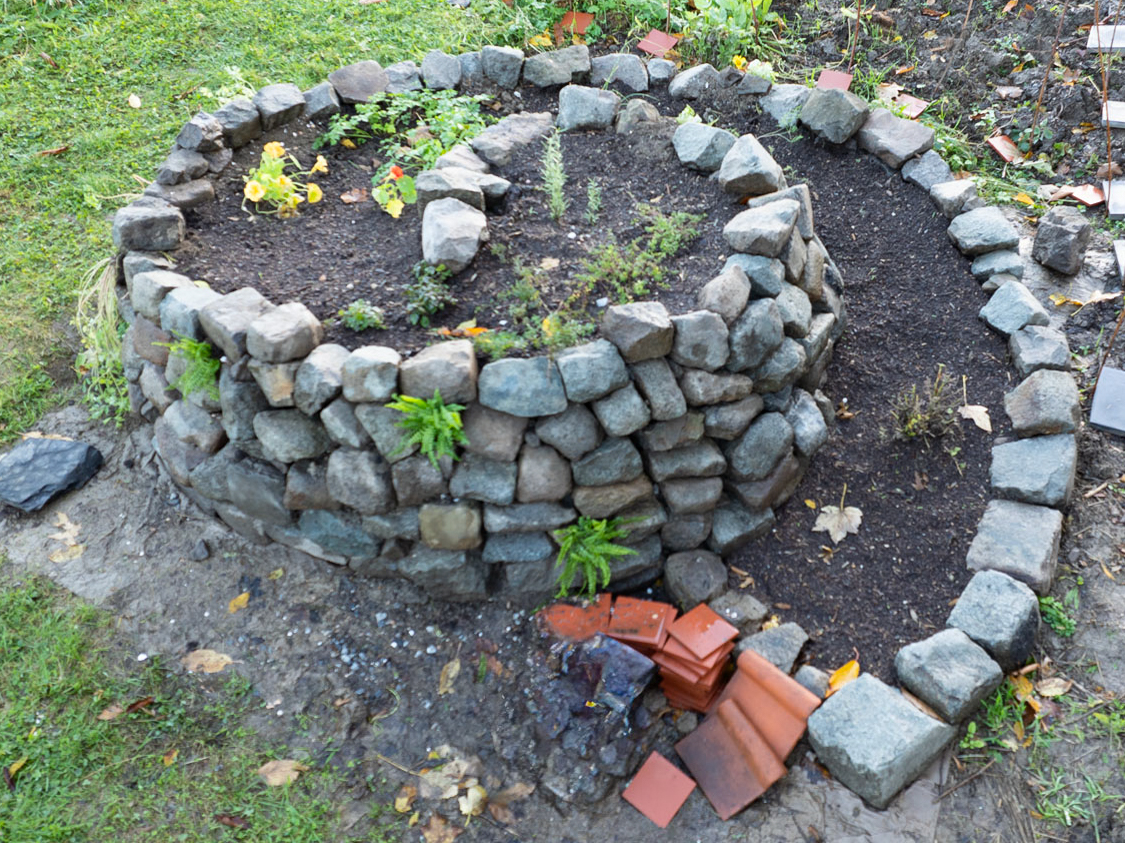

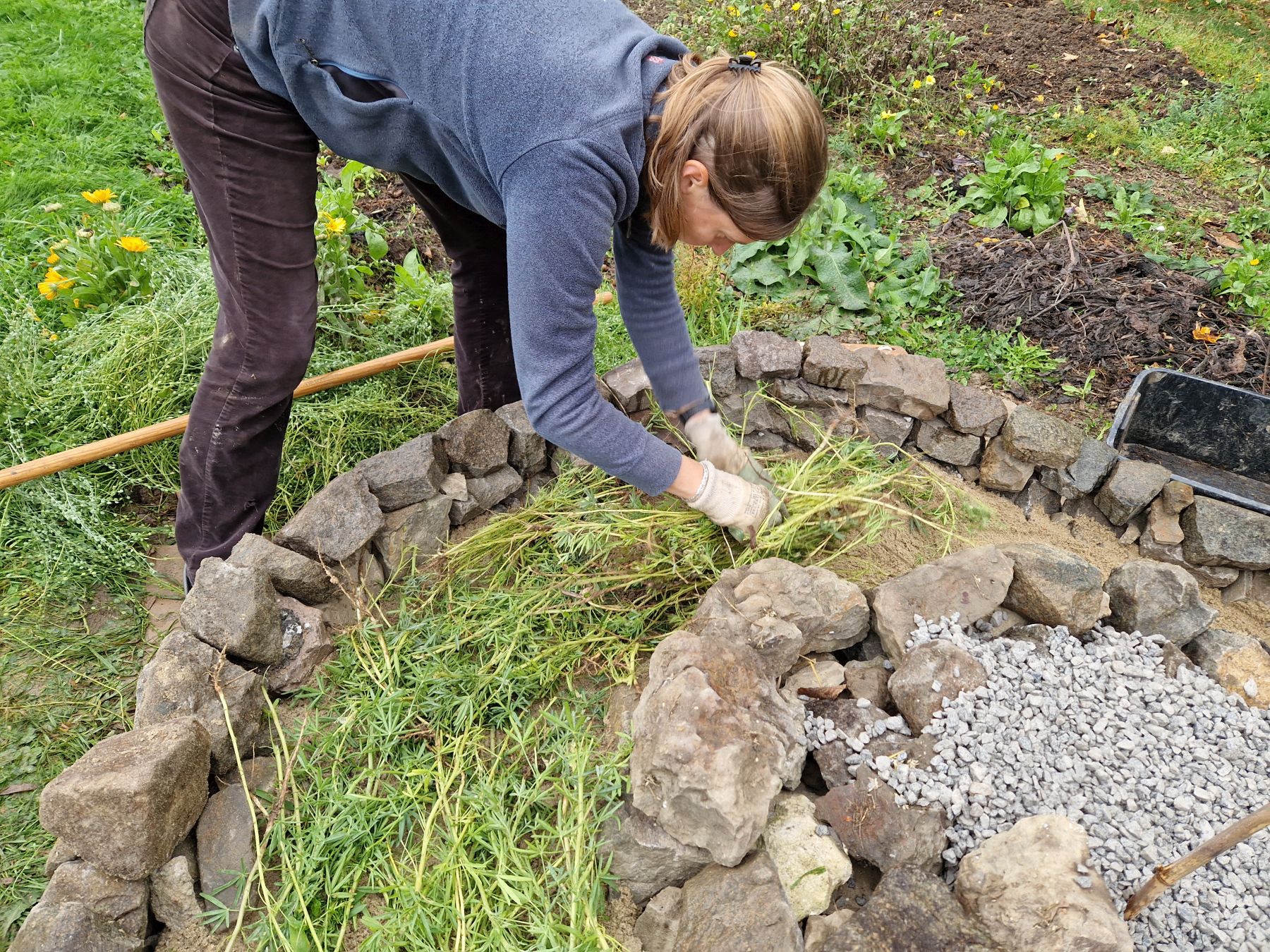
Autumn is the ideal time to evaluate your garden. What are you still missing? What could be improved? How can you add more variety to your garden? Frank is fully committed to ecological vegetable gardening, while I focus on creating as many habitats as possible for biodiversity. We did not have a dry stone wall yet, which attracts certain wildlife and can be substrate for specific plants. Fresh herbs are of course the real seasonings in the kitchen. You can never have too many of them. That's how we came up with the idea of creating a spiral herb garden. Curious? Be sure to keep reading!
The spiral herb garden follows the principles of permaculture, a sustainable way of agriculture modeled on natural ecosystems and traditional horticultural methods. The spiral is ideal for planting a large diversity of herbs in a small area in an energy-efficient way. The stones retain heat from the sunlight during the day and release it during cold nights. The different layers of stones, pebbles, sand, compost and potting soil also ensure good drainage. The spiral is dry at the top and it becomes more humid at the bottom. Some even create a mini pond at the very bottom for amphibians or to grow watercress.
The spiral has a diameter of 1.5 to 2 m and is 0.8 to 1 m at the highest point. Orientation is important, because this way you create microclimates (sunny/shade, exposed/sheltered) on a very compact surface. This way each herb gets its ideal spot.
The amount of material that goes into a spiral should not be underestimated. It took us a while to get it all together: the cobblestones or bricks for the spiral itself, stones, pebbles, or boulders in different sizes (large, medium, small), river sand, compost and ideally also some green manure. We suggest you use recycled material. For once, our stony soil was an advantage. We have an abundance of stones in all sizes!
How to get started? First place cardboard or geotextile at the bottom to avoid weeds. Then you set out the spiral, build the edges with your cobblestones or bricks. You start at the end of the spiral and go up evenly to a height of 80 to 100 cm in the central part at the top. You fill the deepest part with the largest stones, then medium-sized ones, and finally the pebbles with a 5cm layer of sand on top, then a layer of green manure (if you have some) or compost and potting soil on top. In the shallow part you only have these last two layers. The space for planting between the stones is 40 to 50 cm wide. See the drawings on where on the spiral to plant which species. And then you are ready to plant and enjoy! See the process here.
We already planted some perennial herbs and will sow the annuals in spring. Very much looking forward to next summer, when we will be able to serve herbal lemonades, fresh teas, tasty salads and spicy meals with our harvest! I will definitely send you a new photo of the spiral by then.
An ecological garden is of course all about biodiversity. A well-arranged spiral is also a favorable place for bees, ladybugs, ground beetles, spiders or lizards to hide in the space between the stones. The spiral is ideally located close to a flower meadow or hedge, so that fauna can easily find their way to it. Numerous herbs such as marjoram, thyme, mint, chamomile, and marigold are interesting as food for pollinators. I also planted typical wall flora directly on the spiral, such as the beautiful saxifrage fern, ivy leaved toadflax, yellow corydalis and wallflower between the stones. Unique flora that only thrives on walls or in rock habitats. I added crushed eggshell and shell grit as these plants are calcareous species.
At first it takes some time to keep weeds in check, but as the herbs grow it becomes less work and more fun. Do you also have an aromatic spiral or are you making one? Be sure to post photos on our Facebook or Instagram page. Always fun to see the different designs! This way we help each other to enjoy our ecological garden even more!
For more practical details, be sure to check out this link.
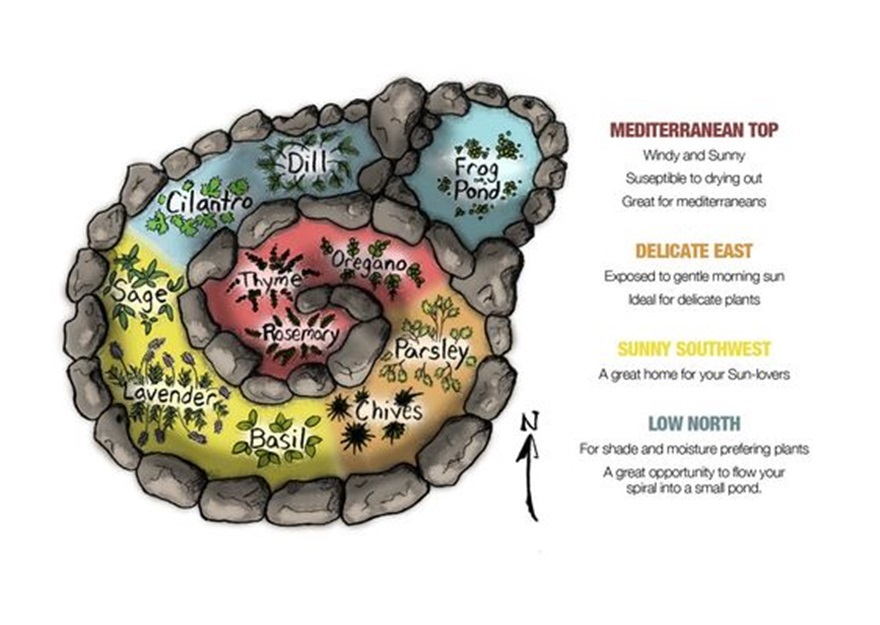
- Netjes! Ziet er fantastisch uit (Johan & Erika)
- Daar zou ik ook eens willen aan beginnen! Ferm 👏 (Roos)


